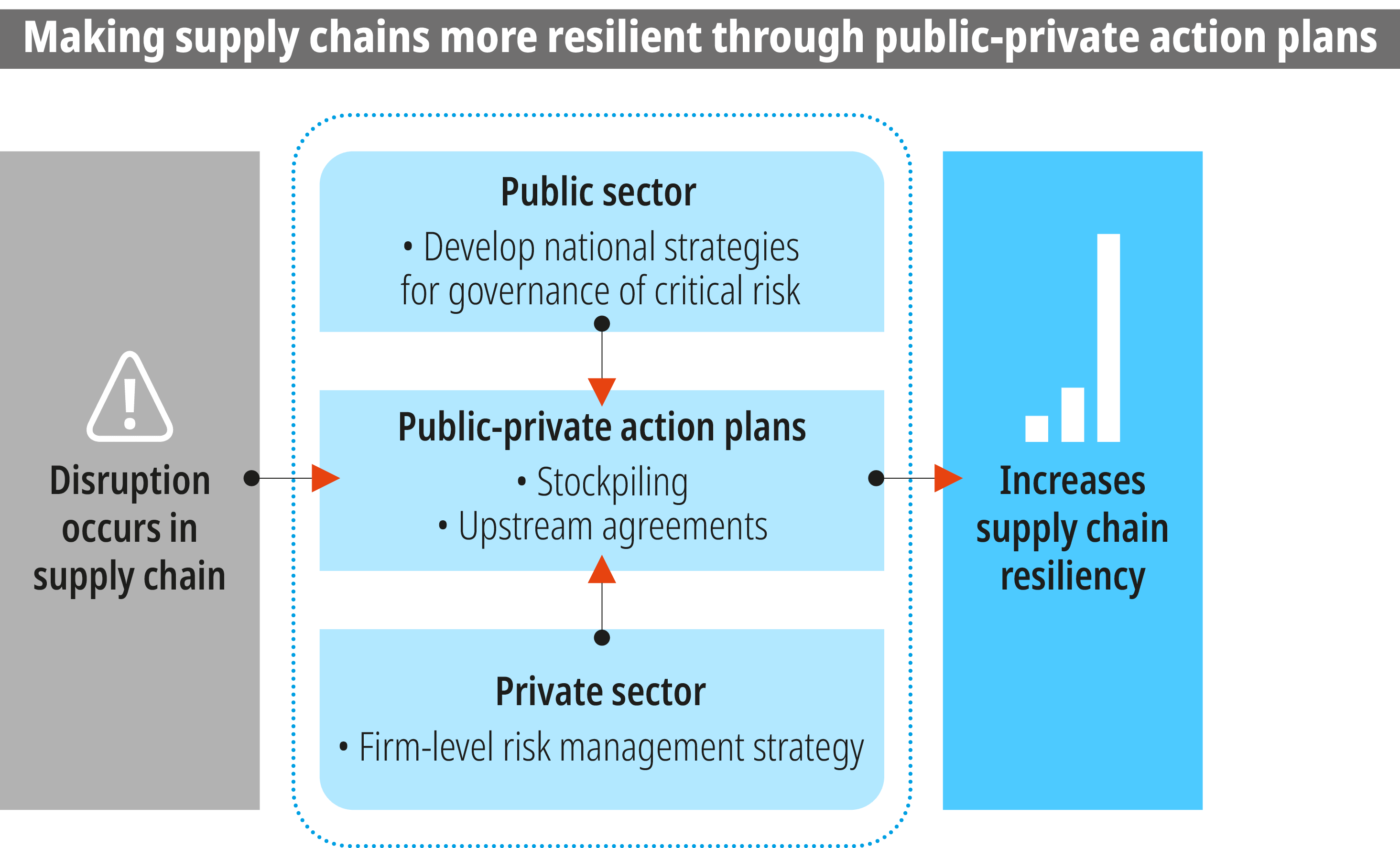Issue
Boosting the resilience of global supply chains requires greater coordination, consultation, and co-operation between governments and the private sector. A strong foundation of public-private consultation can increase capacity to successfully navigate crises, absorb and recover from shocks, and build collective responses. Where disruptions cannot be absorbed by risk management within the private sector, governments will need to enact their own risk management strategies to ensure that essential goods remain available. This requires close coordination with the private sector.
Different types of public-private action plans can be used in the context of severe crisis.
Selective stockpiling
Stockpiles can be an effective element of a risk-management strategy by both firms and governments. However, inefficient stockpiling can generate costs and risks, such as product obsolescence or expiration. Likewise, duplication of stocks or excessive purchasing may create shortages for other countries
Key issues to consider include:
- Choice of which essential products to stockpile: While some products (such as masks) can be easily stored, this is not the case for all products and could lead to the risk of “generals fighting the last war” (stockpiling masks based on the COVID-19 experience when the next crisis might call for syringes). For some goods, the choice could be between stockpiling a final good versus critical inputs.
- Optimal risk-management strategy: There are opportunity costs in investing in stocks of goods as a risk management strategy (this is likely to be the case, for example, for strained health budgets). Assessments of the probability and impact of shocks and risks is a key consideration in the cost/benefits of investing in stockpiles. Another consideration regards the most cost-effective way to build stocks. Global sourcing may reduce costs.
- Respective roles of the public and private sectors and how stocks are best managed: Experience has shown that the management of stockpiles is not straightforward. In the case of food for example, beyond issues of perishability, there are decisions related to access and release. New data-driven innovations have the potential to facilitate dynamic and cost-effective management of stockpiles of essential goods. Anticipatory and scenario-planning approaches can also help governments to better plan for the distribution of essential goods, and thus the level (and placement) of stockpiles needed to buffer demand surges.
- International cooperation: Countries that simutaneously build stocks can aggravate problems by contributing to price surges and shortages. Likewise, the simultaneous release of goods can cause prices to collapse and producers to exit the market, undermining future supply. Regional stockpiles of some essential goods may therefore be a cost-effective solution, notably for poorer countries.
Upstream agreements
- Reconfigurating production capacity is not always feasible. Some goods or parts of goods can be rapidly reproduced, but others require a high degree of specialisation or capital investment, and therefore cannot be rapidly reconfigured. Anticipating reconversions and integrating them in a contingency plan allows firms to make the necessary investments and to have procedures in place to quickly switch production when needed. Redundancies in production capacity and additional stocks for firms already producing essential goods can also be part of the contingency plan.
- Government intervention should take into account the impact on prices and competition that policies that could have in distorting markets and reducing the supply of essential goods. Support should be limited to emergency situations, and allow firms to participate on a non-discriminatory and voluntary basis.
Policy guide
- Work closely with the private sector to design efficient stockpiling systems.
- Consider upstream agreements to boost the production capacity of essential goods.
 |
|
Source: Author's own representation.
|
Related tools & publications
|

